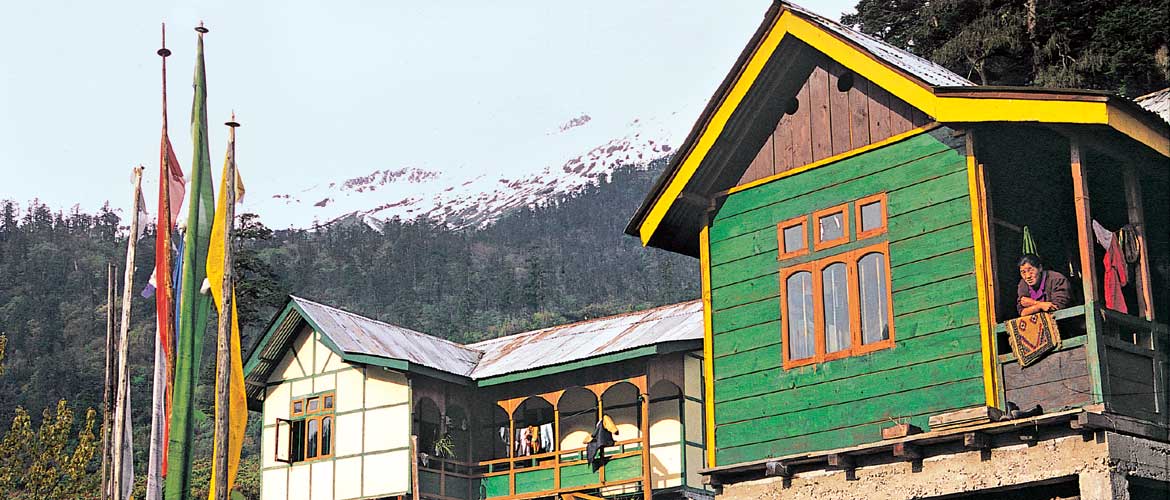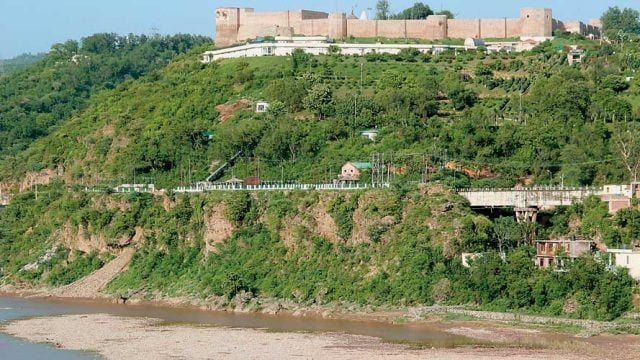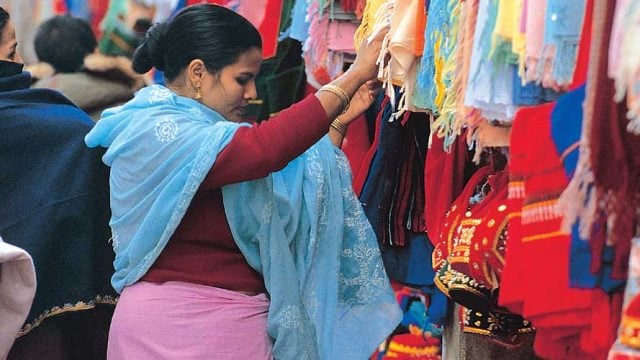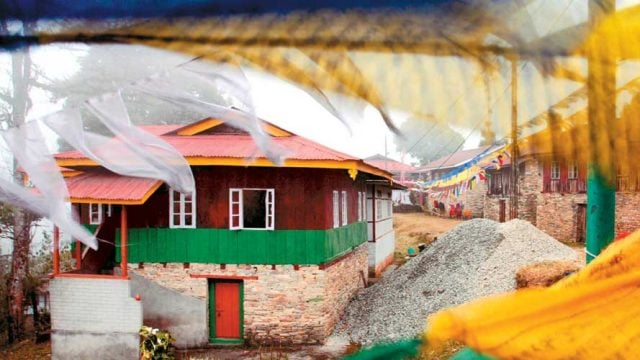At the fork in the road at Chungthang, the one to the right climbs rapidly to a
Where to Stay and Eat
As with Lachen, unfortunately the best way to see Lachung is to book the whole trip with a travel agent. Most hotels have blocked bookings with tour operators, and it might be a problem to get an independent booking, especially in tourist season.
Across the Yumthang river from the main settlement is the Lachung Monastery, a two-storey gompa established in 1880, belonging to the Nyingmapa sect. Its murals are stunning and definitely worth the trip. The metal cantilever bridge you must take to get to the other side of the river is fascinating in itself.

Across the Yumthang river from the main settlement is the Lachung Monastery, a two-storey gompa established in 1880, belonging to the Nyingmapa sect. Its murals are stunning and definitely worth the trip. The metal cantilever bridge you must take to get to the other side of the river is fascinating in itself.
Head further north from Lachung to admire the beautiful Yumthang Valley, about 10km from Lachung proper. This juncture is also the entry point for the Singba Rhododendron Sanctuary, which is a treat when the flower is in bloom, between March and early May. The sanctuary has a number of hiking trails, a great chance to give your legs a warm up after all the driving. As you drive around, the valley will get wider and flatter, with stunning vistas of jagged mountain peaks and rich pastures.
Fourteen kilometres ahead of Yumthang Valley is Yume Samdong or Zero Point. At a dizzying – literally, sometimes – height of 15,200ft, this is the spot from which to stare slack-jawed at the sharp peaks that rise towards Tibet. This is the farthest point that tourists can travel up to. Note that the road is often completely blocked by snow during the winter.

Yarlam Resort (Cell: 09434330033; Tariff: ₹10,000–15,000 with meals) is the best option in Lachung. Modern Residency (Kolkata Tel: 033-40620911; Tariff: ₹6,200, with meals) in Singring village is 3km south of Lachung. Both these establishments have restaurants. Le Coxy Resort (Gangtok Tel: 03592-205113; Tariff: ₹6,300) offers 20 well-kept rooms.
Cliff View Residency (Cell: 09434023384; Tariff: ₹4,500–6,500, with meals) is near the monastery. It has a restaurant and Wi-Fi, and offers sightseeing and trekking services as well. The Fortuna (Cell: 09434024070, 09832087334; Tariff: ₹15,000–33,900) near the checkpost, has a restaurant.

Guru Padmasambhava
Guru Padmasambhava, the most favoured icon in Sikkim, was a yogi from Uddiyan (present-day Swat, located in Pakistan) of the 8th or 9th century. Flying into Tibet astride a tiger, he awed the locals with his tantric powers, and bound the local deities by oath to become servants and protectors of the Buddhadharma. Besides establishing Tibet’s first monastery at Samye, he also founded the first four schools of Tibetan Buddhism, the Nyingma (each only differs in its approach to the path by the precepts and examples set by the founder gurus of the schools).
Padmasambhava’s hagiography shows him to be quite a controversial and colourful character. He is often depicted in thangkas and wall paintings wearing the three robes of the monk and a red cap. At other times he may be seen embodying the tantric tradition as Urgyen Dorje Chang, blue in colour, embracing his consort or as the ferocious Dorje Drolo, the one who subdues demons.
Fast Facts
When to Go March to September, or between November and December when the weather can be freezing but the landscape stunning
Restricted area – best way to visit is through a registered travel agent
Getting There
Air See Gangtok
Rail See Gangtok
Road Driving is pretty much the only way to get to and see north Sikkim. You can only visit this restricted area by booking a package tour, which costs about ₹25,000–35,000, and includes hotel, food, permits and vehicle costs.
OT Getaway Guides
Lachung
Sikkim





